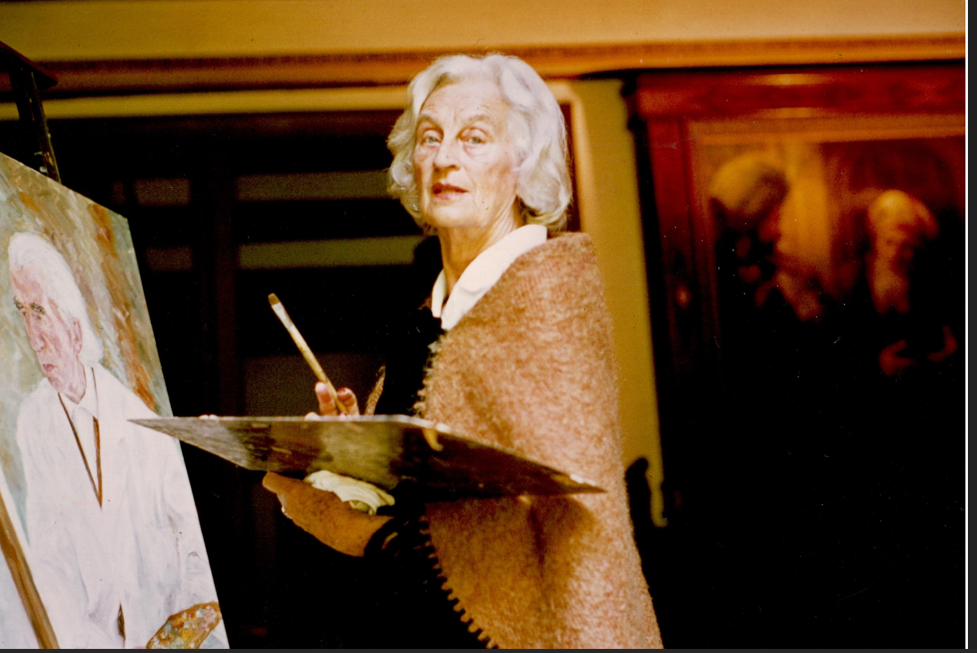Veranstaltungen

- Diese Veranstaltung hat bereits stattgefunden.
“UND GRETE! ………….”
18. Mai um 16:00 bis 1. Juni um 18:00

Grete Thiele ist vor 120 Jahren geboren worden
“Thieles Garten” blickt in diesem Jahr auf ein 102-jähriges Bestehen zurück
Grete Thiele, geb. Itzen, wurde am 01. April 1905 in Bremerhaven – Leherheide geboren. Ihre Liebe für die
Fotografie lebte sie zunächst mit dem Fotoapparat ihres Vaters aus. Bei ihren Erkundungen lernte kam sie
Mecklenburger Weg 100 in Leherheide mit den Brüdern Gustav und Georg Thiele in Kontakt, die dort 1923 ein
6000qm großes Grundstück erworben hatten. Die kreativ höchst aktive Grete Itzen ließ sich im Fotolabor der
Brüder Thiele in der Hafenstraße Lehe in die Technik des Fotografierens, in die Fotolabortechnik sowie im
Vergrößern und Kolorieren von Fotografien unterrichten. Durch die Zusammenarbeit entwickelte sich eine tiefere
Freundschaft und eine gemeinsame Wellenlinie, so dass Grete und Georg Thiele im Jahre 1929
heirateten. Gemeinsam entwickelten und begannen sie zu dritt schon im Jahr 1927 ihre Vision umzusetzen, das
Grundstück in eine parkähnliche Landschaft mit viel Kunst und vor allem Skulpturen anzulegen. Grete Thiele
beteiligte sich an der Gestaltung des Gartens und der Gartenbauarchitektur. Die Kunst des Zusammenfügens in
Harmonie verschiedener Pflanzen, Bäumen und Blumen auch in Symbiose mit dem Tierreich wurde sorgfältig
studiert und beachtet. Kunst und Natur haben schon immer einen Weg gefunden, sich gegenseitig zu
beeinflussen. Erst in den letzten Jahrzehnten wird die Zerbrechlichkeit unserer Umwelt
erkannt. Die künstlerische Begabung Gretes zeigte sich nicht nur im Skizzieren, sondern auch in der
Portraitmalerei, so dass Grete Thiele 1949 nach dem 2. Weltkrieg zunächst Unterricht in Bremen bei der Malerin
Elisabeth Perlia Wuppesahl nahm. Anschließend studierte sie ebenfalls einige Semester an der Kunsthochschule
Bremen mit Schwerpunkt Modellieren und Aktzeichnen. Ihre Portraits, Landschaften und Blumenstillleben
verkauften sich gut. Grete Thiele lebte derweil gleichberechtigt mit ihrem Ehemann Georg und seinem Bruder
Gustav in dem kleinen Paradies am Mecklenburger Weg 100. Ihr offenes Haus, in dem geschlossene
Gesellschaften ein reges gesellschaftliches Leben führten, trug wesentlich die Handschrift von Grete. In
Bremerhaven stationierte US-Militärangehörigen kamen gerne in Thieles Garten und die US-Offiziere in höheren
Rängen ließen sich und ihre Ehefrauen hauptsächlich von der charmanten Grete Thiele malen. Neben den
beiden Brüdern Thiele hatte auch Grete Thiele einen festen Platz in der regionalen Welt der Kunst und Kultur. Sie
stellte ihre Arbeiten in Bremerhaven, Beverstedt und Hude aus. Gehörte der “Künstlervereinigung Unterweser
e.V. ” an und war allerseits anerkannt und beliebt. Nach dem Ableben ihres Ihre Mannes Georg im Jahr 1969,
dem bereits sein Bruder Gustav ein Jahr später folgte, hielt Grete Thiele den Garten gegen einen kleinen,
steuerfreien Obolus von 49 Pfennig noch bis 1971 geöffnet.
Grete Thiele verstarb am 02.03.1990 in der Seniorenresidenz “Astorpark“ in Langen. Sie hat mit den Gebrüdern
Thiele voller Lebensfreude und Sinnerfüllung gelebt und mit Kunst und Kultur in einem wunderschönen Garten
zum gesellschaftlichen Leben unserer Region beigetragen. Grete selber hatte zahlreiche Freundinnen, die in vielema
Aktivitäten einbezogen waren. “Thieles Garten” blickt in diesem Jahr auf ein 102-jähriges Bestehen zurück und
nimmt Platz 10 im Ranking der 100 schönsten Gärten Deutschlands ein. Eine emanzipierte und selbstbestimmte
Frau hat dort gleichberechtigt mit Georg und Gustav Thiele ihr Wirken und ihre DNA hinterlassen. Die Idee und
Umsetzung für die Ehrung Grete Thieles stammen von Anne Schmeckies (Galerie Goethe 45) und Paula
Baumgardt-Ackermann (Thieles Garten), die zusammen die Ausstellung kuratieren und damit eine starke
Bremerhavener Frau und Künstlerin ehren, die sich selbst die Erlaubnis gegeben hat, auch in schwierigen Zeiten
emanzipatorische Freiräume nicht nur für sich zu schaffen. Die Ausstellung wird über das Kulturamt vom
Magistrat der Stadt Bremerhaven finanziert.
Eröffnung: Sonntag, 18. Mai 2025, 16 – 18 Uhr
Ausstellungsdauer: 18. Mai – 1. Juni 2025
Öffnungszeiten: So, Di, Do, Fr, Sa : 16 h – 18 h
(c) Grete an der Staffelei: Thieles Garten e.V.
Barrierefrei. Kinderfreundlich. Eintritt frei.


